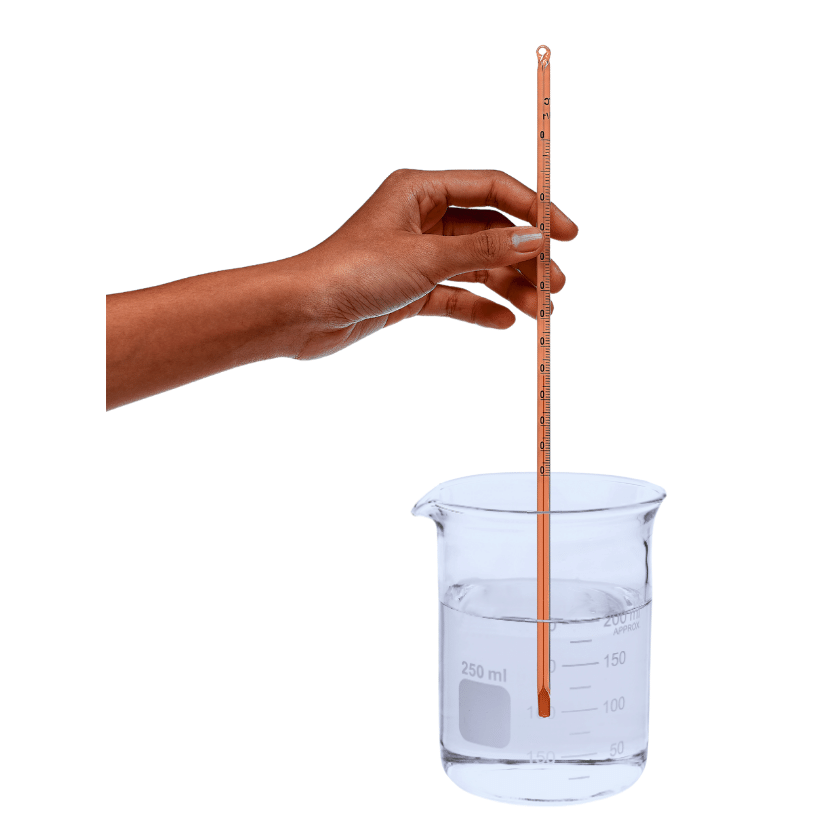4. Complete Activity 3.4 (Page 27). Take some tap water in a beaker or a mug. Dip the thermometer in water so that the bulb is immersed in water but does not touch the bottom or the sides of the container. Hold the thermometer vertically (Fig. 3.5). Observe the movement of mercury in the thermometer. Wait till the mercury thread becomes steady. Note the reading.
Answer:
The above activity can be carried out as follows:
Aim: To read the temperature of water using the laboratory thermometer.
Materials Required: Beaker, water,clinical thermometer.
Procedure:
(i) Fill the beaker with tap water.
(ii)Dip the thermometer in water so that the bulb is immersed in water but does not touch the bottom or the sides of the container. Hold the thermometer vertically.
(iii)Observe the movement of mercury in the thermometer.
(iv) Wait till the mercury thread becomes steady. Note the reading without taking the thermometer out of the water. The setup is shown below:

Observations: At first the mercury level changes rapidly and then it stabilizes.
Conclusions: We conclude that:
- The thermometer should not touch the container because it can absorb heat from the container and give an inaccurate reading.
- Initially the mercury level changes rapidly because it is expanding or contracting due to the temperature of the water.
“Complete Activity 3.4 (Page 27). Take some tap water in a beaker or a mug. Dip the thermometer in water so that the bulb is immersed in water but does not touch the bottom or the sides of the container. Hold the thermometer vertically (Fig. 3.5). Observe the movement of mercury in the thermometer. Wait till the mercury thread becomes steady. Note the reading.“ – Solved.
Related Links:
Solution to Extended Learning Problem 1
Solution to Extended Learning Problem 2
Solution to Extended Learning Problem 3
Solution to Extended Learning Problem 4
Solution to Extended Learning Problem 5
Solution to Activity 3.1
Solution to Activity 3.2
Solution to Activity 3.3
Solution to Activity 3.5
Solution to Activity 3.6
Solution to Activity 3.7
Solution to Activity 3.8
Solution to Activity 3.9
Solution to Activity 3.10
Solution to Activity 3.11
Solutions to Chapter 3 Heat


